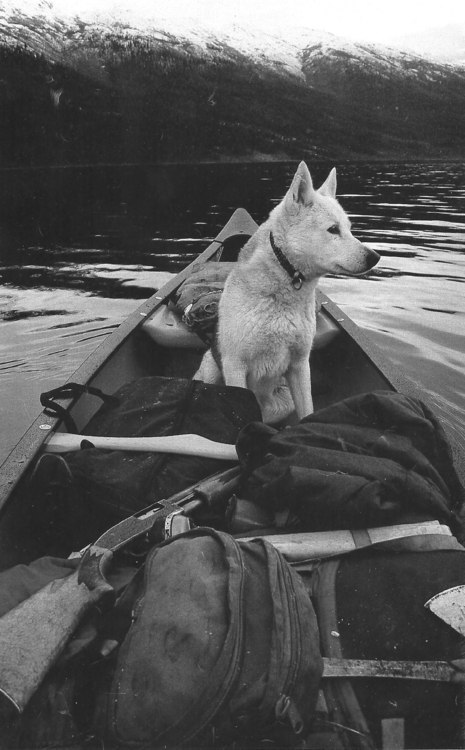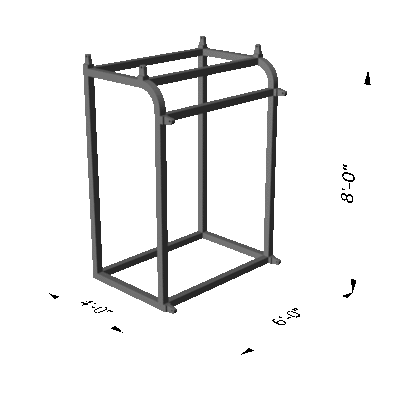Dynamically Responsive Housing
An exploration into creating a prototypical housing type for defunct urban Detroit; housing that is both mass produced, and directly responsive to environment in which it's deployed.
Thursday, April 25, 2013
Structural and Connection Detail Work
This week's work involved developing the design as a whole to a further level of detail, and determining a suitable method for connecting the living compartments to the work core.
Square section steel tubing is the primary structural system, with metal studs supporting the interior and exterior finish. The living compartment is bolted to the steel frame of the work core, from within the compartment, along their connecting edge.
 | ||
Thursday, April 18, 2013
Tectonic Testing: Live Module Customization and Connection
In the Section and Plan drawings shown below, a chosen scheme for the interface between the Live compartments and Work core have been tested. Program dictates certain built in features and fixtures. Public/private conditions dictate the size of glazed openings.
 |
| Plan at 9' |
 |
| Plan at 5' |
 |
| Section at sleeping compartment |
Sketchbook Work
The following sketchbook work deals with designing the interface between the live units and work core of the pioneer cabin, as well as some notes on aesthetics, symbolism, and cultural relevance of certain forms and material choices.
Thursday, April 11, 2013
Sketchbook Work: Programming Work, Living, and Systems Spaces
At this point I've deviated from each living space being created from a single modular unit. Each space remains detachable, but this is solely for purposes to transportation to the Hantz Farms site.
The work space form has been explored, focusing on creating radial asymmetry about the vacant house resource.
Systems have been defined in program.
The work space form has been explored, focusing on creating radial asymmetry about the vacant house resource.
Systems have been defined in program.
Thursday, April 4, 2013
Further Design Iterations/Adaptations
Below is a series of iterative design moves, again dealing with various components and how they are placed and formed.
Including exploring the possibilities of modular schemes in fabrication, such as allowing for a second circulation core:
And the introduction of radial asymmetry in the work core, which results in decreased privacy at the outer face.
Including exploring the possibilities of modular schemes in fabrication, such as allowing for a second circulation core:
And the introduction of radial asymmetry in the work core, which results in decreased privacy at the outer face.
Living Module
The animation below shows the basic components of each living module.
1. A welded frame 3" square section steel tube. Attachment points for suspended placement are attached.
2. Frame is fitted with rigid insulation panels.
3. Interior plywood finish.
4. Marine grade plywood exterior cladding.
5. Painted corrugated steel roof and siding
6. Baffles for air and light exchange and one glazed opening. (Opening on opposite face has operable door option).
1. A welded frame 3" square section steel tube. Attachment points for suspended placement are attached.
2. Frame is fitted with rigid insulation panels.
3. Interior plywood finish.
4. Marine grade plywood exterior cladding.
5. Painted corrugated steel roof and siding
6. Baffles for air and light exchange and one glazed opening. (Opening on opposite face has operable door option).
Thursday, March 28, 2013
Pioneer Site Behavior
Depending on the nature of available resources, described by parameters such as density, value, accessibility, etc, pioneer communities will aggregate in a number of different ways.
Within the 30' x 30' grid established by Hantz farms, their orientation will be limited to four directions. The cabins will face a house to facilitate collection of resources, and depending on how valuable the resource, will gather as close as to it as the grid permits. There will be "runts" that cannot obtain a prime position for "feeding".
Occupied buildings and their associated land will not be usable, further restricting access. The prospect of a particularly valuable area will bring pioneers, unless they can be kept secret by more independent workers.
Geometry Masturbation: An Unaffordable Luxury
Traditionally, and in the case of Detroit as well, the frontier life lacks luxury. When designing a building for this frontier, the least affordable luxury is geometry masturbation; the practice of playing with and implementing a certain spatial geometry simply because one "likes it".
Conceived forms must be tested by being juxtaposed with others. The process so far has involved creating variations on specific design elements, implementing them, and only then deciding which is optimal. Only by actually drawing and testing a number of such schemes can an objective decision be made.
The images below shows this iterative approach to design, in which specific features of a building are allowed to vary, allowing only the most fit to establish itself.
Characteristics include design choices like placement of public and private spaces in plan and section, articulate vs inarticulate circulation, minumum interior dimensions for individual spaces, etc.
These images depict approximately fifty five distinct designs, however by mixing various options for each characteristic tested, thousands of combinations are possible. It is important therefore to first eliminate unsuccessful options before testing fully assembled building schemes.
Conceived forms must be tested by being juxtaposed with others. The process so far has involved creating variations on specific design elements, implementing them, and only then deciding which is optimal. Only by actually drawing and testing a number of such schemes can an objective decision be made.
The images below shows this iterative approach to design, in which specific features of a building are allowed to vary, allowing only the most fit to establish itself.
 | ||
| In plan |
 |
| And perspective |
These images depict approximately fifty five distinct designs, however by mixing various options for each characteristic tested, thousands of combinations are possible. It is important therefore to first eliminate unsuccessful options before testing fully assembled building schemes.
Sunday, March 24, 2013
Sketchbook Work: Site and Program
 |
| Though small in size, the cabins are arranged such that adjacency conditions inform program. |
 |
| Program zones are established for the center of the cabin and for the interior and exterior of each wall. |
 |
Thursday, March 14, 2013
Cabins
The word cabin is evocative of the frontier and a distinct North American vernacular for many. Stacked pine logs, small windows, and a crooked chimney, with snowshoes, tools and cooking utensils on the wall.

This image is of a typical cabin, but there are other types. Each type of frontier landscape had at one point, a type of frontier housing associated with the pioneers that settled there.
Driven by necessity, cabins were built using some imported and some local materials. Pioneers exploited the available resources to the fullest, because for many, frontier life was extremely taxing.
My aim is not to recreate a cabin that emulates any traditional type. Rather, it is to create a new cabin type, for a new frontier: Detroit. For each element of traditional cabin life, it is likely that there will be a parallel element associated with the Detroit pioneer cabin type.

This image is of a typical cabin, but there are other types. Each type of frontier landscape had at one point, a type of frontier housing associated with the pioneers that settled there.
Driven by necessity, cabins were built using some imported and some local materials. Pioneers exploited the available resources to the fullest, because for many, frontier life was extremely taxing.
My aim is not to recreate a cabin that emulates any traditional type. Rather, it is to create a new cabin type, for a new frontier: Detroit. For each element of traditional cabin life, it is likely that there will be a parallel element associated with the Detroit pioneer cabin type.
Subscribe to:
Posts (Atom)

























